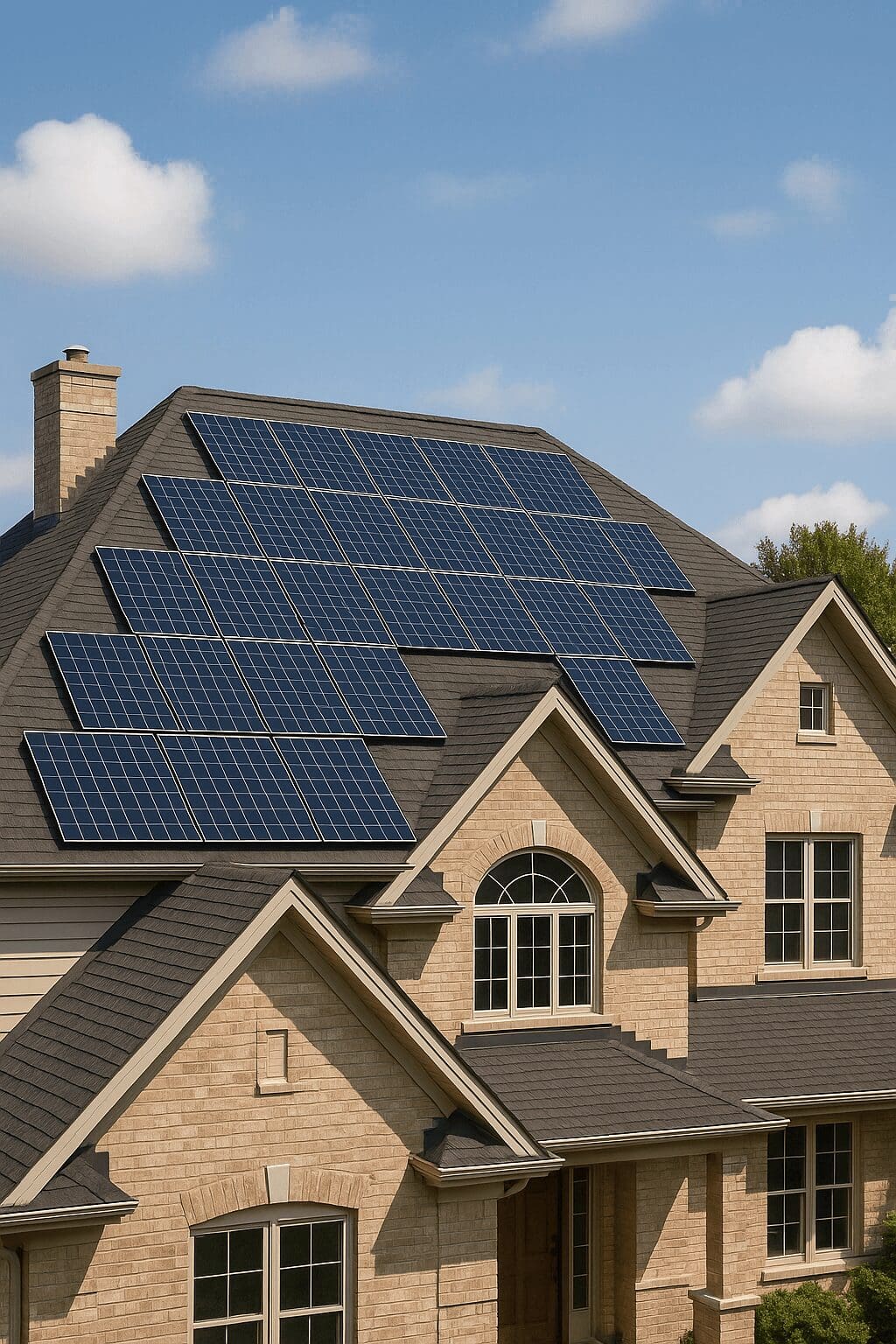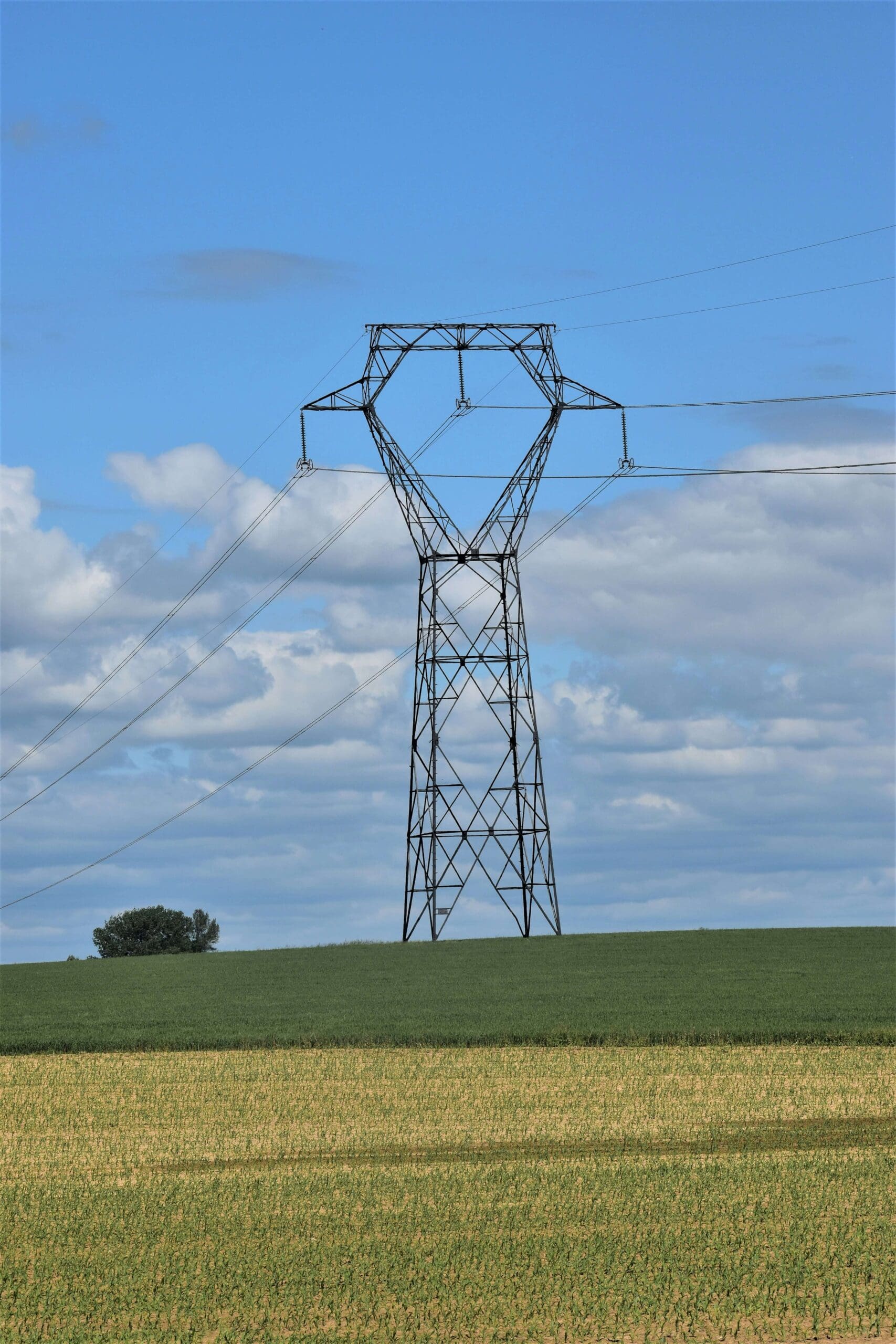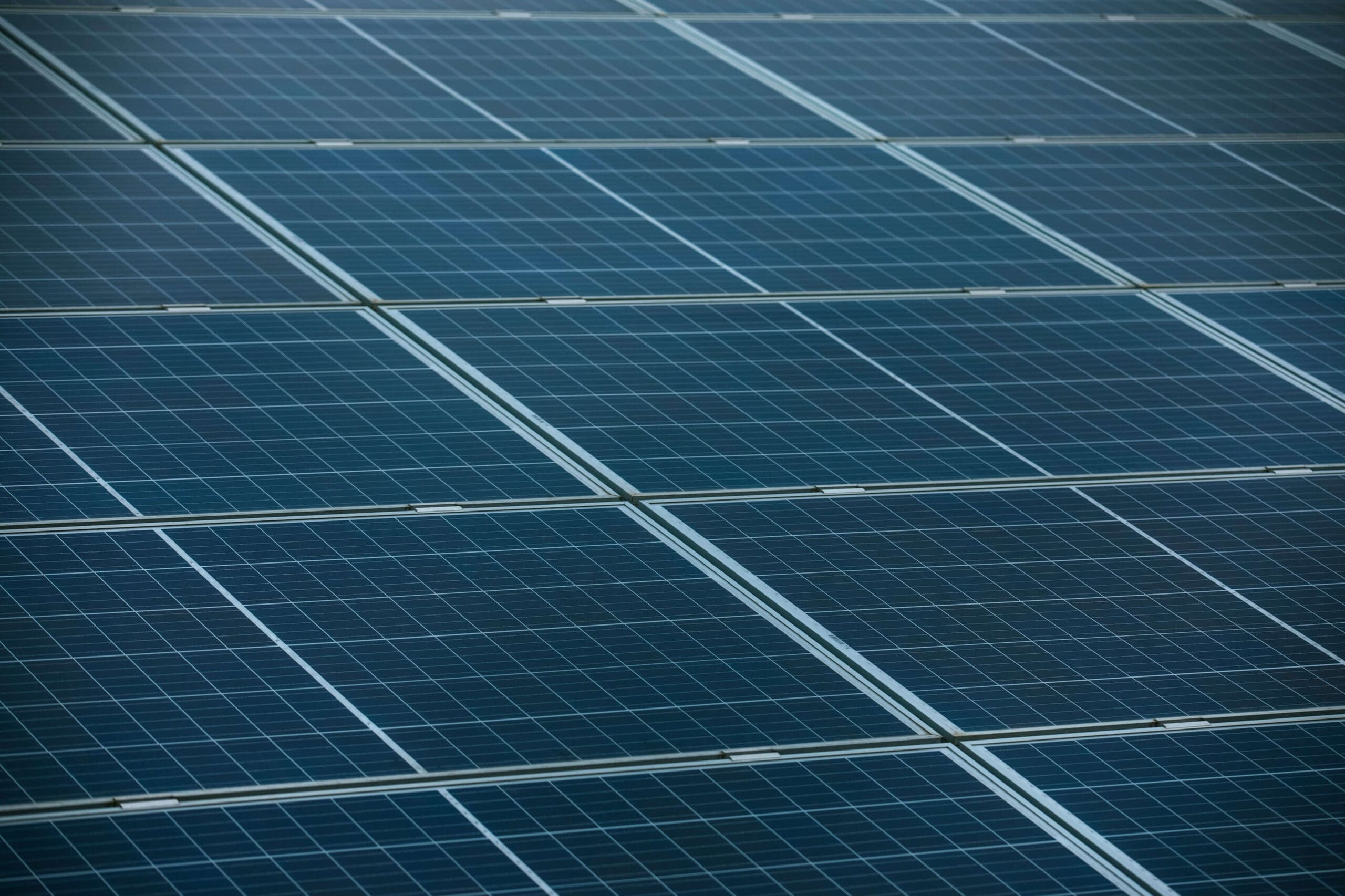Imagine a world where you’re in complete control of your energy, where instead of watching your power bills climb every year, you’re producing your own electricity right from your rooftop solar panels. No more helplessly accepting rate hikes. No more relying on traditional utility power. Just limitless, reliable energy flowing straight from the sun to your home.
That possibility is already happening and it’s waiting for you. Across Canada, homeowners are transforming their rooftops into personal power stations, taking charge of their electricity costs and energy future. Rooftop solar isn’t some distant technology. It’s here, it’s accessible, and it’s changing the way people power their lives.
Why Homeowners Are Making the Switch to Solar
- Major Savings – Generating your own electricity means paying less to utility companies. Many homeowners see dramatic reductions in their monthly energy costs.
- Boosted Home Value – Homes with solar panels are worth more. Buyers love the idea of lower utility bills and energy independence.
- Energy on Your Terms – No more waiting for the grid to deliver power at whatever price they set. You produce it, you use it, and you benefit from it.
- Government Support – Canada is making it easier than ever to go solar with incentives like the Canada Greener Homes Loan.
Is Your Home a Good Fit for Rooftop Solar?
Before you jump in, it’s important to assess whether your roof is ready for solar panels. Luckily, finding out is easier than ever with online tools designed specifically for Canadian homeowners.
This guide is your roadmap to answering that question. We’ll cover everything you need to know—how solar works, why homeowners are making the switch, and how you can determine if your home is the perfect candidate for rooftop solar. (But, if you want our experts to assess your home’s solar potential, book a free Strategy Session to get all the info you need, without lifting a finger.)
By the end, you’ll be ready to take action, whether that means using solar assessment tools or speaking to an expert about your solar options.
Get ready. You’re about to see what’s possible when you take control of your own energy.
Key Factors in Assessing Your Home for Solar
Rooftop solar panels are a powerful way to take control of your energy costs, reduce dependence on traditional power sources, and even boost your property value. However, not every home is perfectly suited for solar installation, and understanding key factors can help you determine if your roof is a great match. From roof orientation to structural integrity, several elements play a role in ensuring optimal solar performance. Let’s break down the essential considerations before making the switch.
Roof Slope and Orientation
The way your roof faces the sun determines how much solar energy it can capture. For maximum efficiency, solar panels work best on south-facing roofs with a slope between 30 to 45 degrees. South-facing panels receive the most sunlight throughout the day, leading to higher energy production.
However, east- or west-facing roofs can still generate significant power, especially with advancements in solar technology, such as bifacial solar panels, which capture sunlight from both the front and back surfaces. Bifacial solar panels are a game-changer because they can utilize reflected sunlight from surfaces like rooftops, ground cover, or nearby structures, improving overall solar efficiency even in orientations that aren’t directly facing the sun.
North-facing roofs, on the other hand, tend to be less ideal, as they receive minimal direct sunlight, limiting their energy output. If your roof doesn’t face south, a solar expert can evaluate alternative solutions such as adjusted panel positioning, additional panels to compensate, or tilting and tracking systems that dynamically optimize solar exposure throughout the day. Tilting systems allow panels to be angled for maximum sunlight absorption, making them a great option for roofs with suboptimal orientation. Solar tracking systems take this a step further by automatically adjusting panel angles to follow the sun’s movement, increasing overall energy generation.
Best Roof Types for Solar Panels
The material of your roof plays a major role in determining ease of solar installation and long-term system performance. The following roof types provide straightforward mounting, as well as other benefits:
1. Asphalt Shingles
Asphalt shingles are one of the most common roofing materials and are highly compatible with solar panel installations.
- Mounting Method: Flashing mounts are used to secure solar panels to the roof. These mounts slide under the shingles, creating a watertight seal that prevents leaks.
- Benefits: Affordable, durable, and simple to install on—making them an ideal choice for homeowners considering solar.
2. Metal Roofs
Metal roofs—especially standing seam varieties—are excellent candidates for solar installation. Their durability ensures long-lasting support for solar panel systems.
- Mounting Method: Clamp-based mounting systems attach directly to the standing seams of the roof, eliminating the need for penetrations that could weaken the structure.
- Benefits: Exceptional longevity, rust resistance, and no need for drilling into the roof surface.
3. Tile Roofs
Tile roofs provide a stylish, durable surface but require special care during solar panel installation to prevent breakage.
- Mounting Method: Tile replacement mounts are used, where individual tiles are replaced with metal flashing to hold the solar panels securely.
Benefits: Maintains aesthetic appeal while ensuring proper panel attachment without cracking tiles.
Challenging Roof Types for Solar Panels
These roof types require special techniques to ensure secure placement without causing damage:
1. Wooden Roofs
Wooden roofs require non-invasive mounting techniques to prevent structural damage or water penetration.
- Mounting Method: Installation requires customized brackets and additional waterproofing measures to protect the wood surface.
- Considerations: Because wooden roofs are more vulnerable to moisture, proper sealing and mounting design are essential.
2. Slate Roofs
Slate roofs are fragile, making traditional panel mounting techniques less effective.
- Mounting Method: Special non-penetrative racking systems or raised brackets allow panels to be secured without cracking the slate.
Considerations: Due to the complex installation, costs may be higher, but professional expertise ensures secure and efficient attachment.
Shading and Obstructions
For optimal solar performance, panels need uninterrupted access to sunlight throughout the day. Even small amounts of shading, whether from trees, neighboring buildings, chimneys, or roof vents, can significantly reduce energy output by blocking direct sunlight from reaching the panels. Since solar systems rely on maximum exposure, identifying and mitigating shading issues is essential for ensuring the best possible results.
Why Shading Matters in Solar Performance
Solar panels generate electricity by absorbing sunlight, which is then converted into usable energy for your home. Any obstruction that casts a shadow on your panels reduces their efficiency by limiting the amount of sunlight they can convert into power.
Even partial shading can have a significant impact on overall system output. For example, if just one panel in a string of interconnected panels is shaded, it can lower the efficiency of the entire system unless advanced technologies, such as microinverters or power optimizers, are in place.
The Importance of a Proper Shade Assessment
Before installing rooftop solar panels, it’s crucial to assess your roof for potential sunlight obstructions. A proper assessment evaluates:
- Seasonal Sun Exposure: The sun’s position changes throughout the year, so a strong shade assessment considers winter vs. summer sun angles.
- Obstruction Mapping: Identifying structures or trees that could block sunlight at certain times of the day.
- Optimal Panel Placement: Panels should be installed in the best sun-facing positions to maximize energy production.
How GreenKey Homes Can Assist with Your Shade Assessment
Choosing the right solar solution involves so much more than installing panels. It means making sure they’re placed strategically for maximum power generation. That’s why GreenKey Homes provides a free strategy session to help homeowners determine if solar is the right fit. We offer a zero-pressure analysis of your home’s solar potential, including a detailed assessment of shading and sunlight exposure.
With GreenKey Homes, you’re never left guessing. We provide expert guidance, ensure optimal placement, and work alongside you to create a solar solution tailored to your home’s conditions.
Schedule your free strategy session to take the first step toward energy independence.
Solutions for Minimizing Shading
If shading is present, don’t worry, there are effective ways to maximize solar exposure without compromising system performance.
1. Tree Trimming and Landscaping Adjustments
- If trees are blocking sunlight, trimming branches can help increase sun exposure without requiring full removal.
- In some cases, homeowners opt to remove small trees that heavily obstruct their solar panels.
2. Strategic Panel Placement
- Instead of placing panels in areas directly affected by shade, solar experts can design an optimized layout to ensure maximum exposure.
- If one area of the roof receives more direct sunlight, panels can be installed in the most favorable position.
3. Advanced Solar Technology Solutions
- Microinverters – These ensure that each panel operates independently, so if one is shaded, it won’t drag down the efficiency of the others.
- Power Optimizers – Devices that help minimize the effects of shading by enhancing power conversion at the individual panel level.
- Bifacial Panels – These capture reflected sunlight from surrounding surfaces, improving efficiency even in partially shaded conditions.
Shading doesn’t have to be a deal-breaker for rooftop solar installation. By implementing smart solutions—such as landscaping adjustments, optimized panel placement, and advanced solar technologies—homeowners can ensure maximum solar efficiency even in less-than-perfect conditions.
With the right approach, solar panels can deliver consistent energy savings, improve home value, and provide long-term energy independence, regardless of minor shading challenges. Consulting with a solar expert can help tailor the best strategy for your roof’s unique conditions, ensuring you get the most out of your investment.
Ensuring a Safe and Durable Solar Installation
A common concern among homeowners considering rooftop solar is whether installation will compromise their roof’s integrity. The good news is that when done correctly, solar panel installation is designed to protect, rather than weaken, your roof and home envelope.
Professional Mounting for Long-Term Durability
Solar panels are installed using specialized techniques that ensure they are securely fastened while maintaining the waterproof barrier of your roofing material. Advanced flashing systems and non-invasive mounting solutions—especially for metal and slate roofs—prevent structural issues and ensure long-term durability. No drilling methods are used on certain roofing types, further reinforcing your home’s safety and protection.
Structural Integrity and Load Considerations
Since solar panels add weight to your roof, it’s important to ensure your home’s structure is sound and capable of supporting the system. A professional assessment evaluates roof stability, material strength, and whether your roof’s lifespan aligns with solar panel durability.
- If your roof is nearing the end of its lifespan, replacing it before installation may be necessary to avoid future complications.
- Solar panels typically last 25+ years, so pairing them with a durable roofing material ensures long-term performance without requiring premature removal.
Guaranteed Protection Against Leaks or Damage
High-quality mounting systems are designed to prevent leaks, structural damage, or unnecessary wear, allowing solar panels to enhance rather than compromise your home. Every aspect of installation is engineered for reliability, meaning you can enjoy energy independence and savings without worrying about roof damage.
If you’d like a deeper dive into how rooftop solar installations protect your home, check out our blog article, “Rooftop Revolution: The Past, Present, and Future of Solar Energy” (See section: Hassle-Free Installation That Won’t Damage Your Roof)
With the right mounting approach, solar panels can be installed efficiently and safely, offering decades of energy savings while preserving the structural integrity of your home.
Incentives for Canadian Homeowners
Government programs are making solar energy more accessible for Canadians by offering financial incentives that help offset installation costs. Whether through interest-free loans, rebates, or tax credits, homeowners can take advantage of these programs to make solar power more affordable.
Canada Greener Homes Loan
The Canada Greener Homes Loan is a government-backed initiative designed to help homeowners invest in energy-efficient upgrades, including solar panel installations. This program provides interest-free financing, making it easier for Canadians to transition to renewable energy without upfront financial strain.
Key Features of the Canada Greener Homes Loan
- Loan Amount: Homeowners can access interest-free loans ranging from $5,000 to $40,000.
- Repayment Term:The loan is spread over 10 years, allowing manageable payments without interest charges.
- Upfront Funding: A portion of the loan can be delivered before installation to help cover deposits required by contractors.
- Eligibility:Homeowners must undergo a pre-retrofit energy evaluation before applying.
- Approved Retrofits: The loan covers solar panel installations, insulation upgrades, heat pumps, and other energy-efficient improvements.
This program has been extended with an additional $600 million in funding, reflecting strong demand among Canadian homeowners looking to reduce energy costs and improve efficiency.
Provincial Rebates and Tax Credits
In addition to the Canada Greener Homes Loan, several provinces offer rebates and tax credits to further reduce the cost of solar installations:
- Alberta: The Solar Club Program provides energy credits for homeowners who generate excess solar power.
- British Columbia: The CleanBC Better Homes Program offers rebates for solar installations and energy-efficient home upgrades.
- Ontario: The Energy Affordability Program provides financial assistance for energy-saving retrofits, including solar panels.
- Quebec: The Rénoclimat Program offers grants for energy-efficient home improvements, including solar energy systems.
Each province has unique incentives, so homeowners should check local programs to maximize their savings.With government-backed financing, provincial rebates, and tax credits, switching to solar energy has never been more affordable.
Final Thoughts and Next Steps
Rooftop solar offers long-term savings, energy independence, and increases property value, but not every home is an ideal candidate. Before making the switch, homeowners should evaluate key factors such as roof orientation, shading, structural integrity, and available incentives to determine feasibility.
Here’s what to consider when assessing solar potential:
- Roof Orientation & Slope: South-facing roofs with a 30–45-degree tilt provide the best sunlight exposure.
- Shading & Obstructions: Trees, chimneys, or nearby buildings may affect energy production, requiring a professional shade assessment.
- Roof Material & Condition: Certain roofing types like asphalt, metal, and tile are ideal for mounting solar panels securely.
- Financial Incentives:Programs like the Canada Greener Homes Loan and provincial rebates can significantly reduce upfront costs.
- Energy Needs & Future Savings: A well-planned solar system can provide decades of cost savings and increased home value.
Determining whether solar is right for your home is simpler than ever with GreenKey’s free strategy session. Our team provides a personalized, no-pressure analysis to help you explore your options, compare quotes, and make an informed decision.
Book your free GreenKey strategy session today and take the first step toward energy independence.



